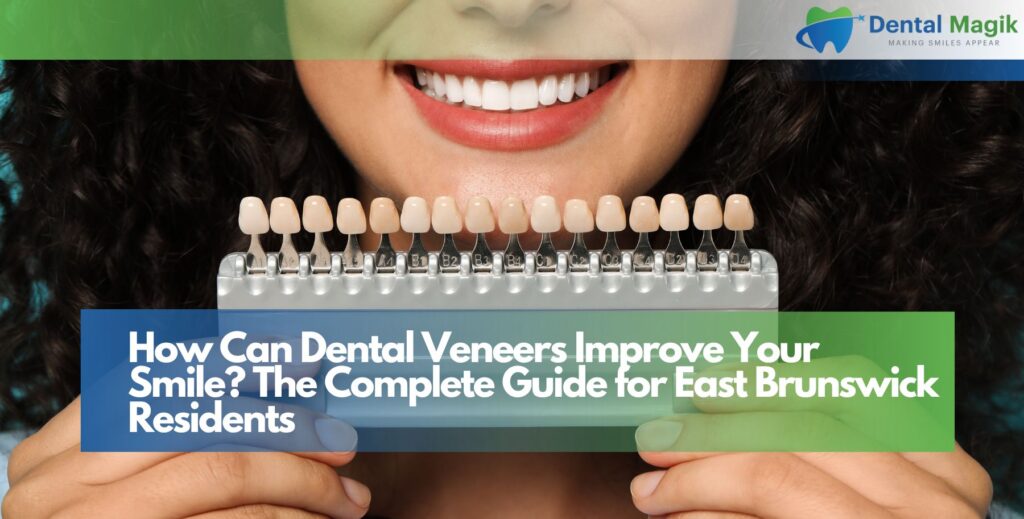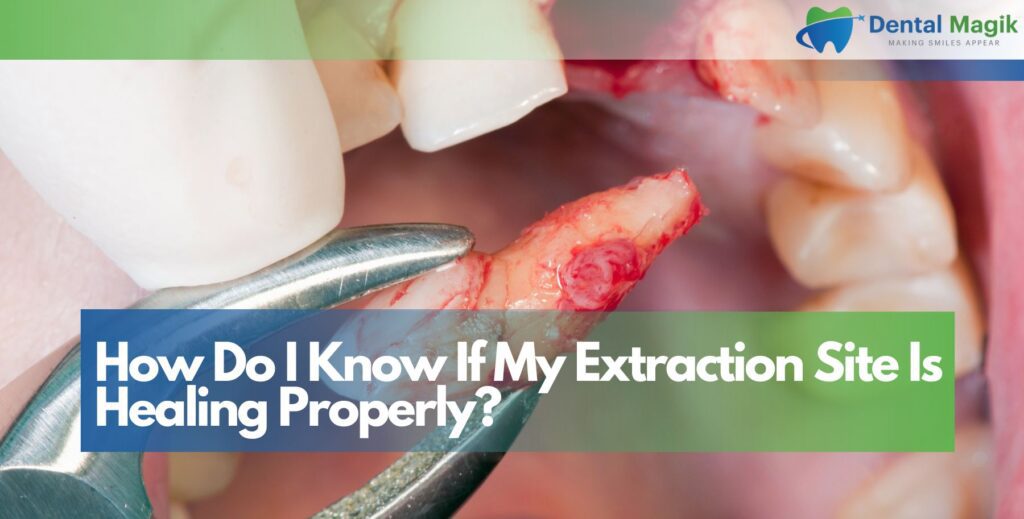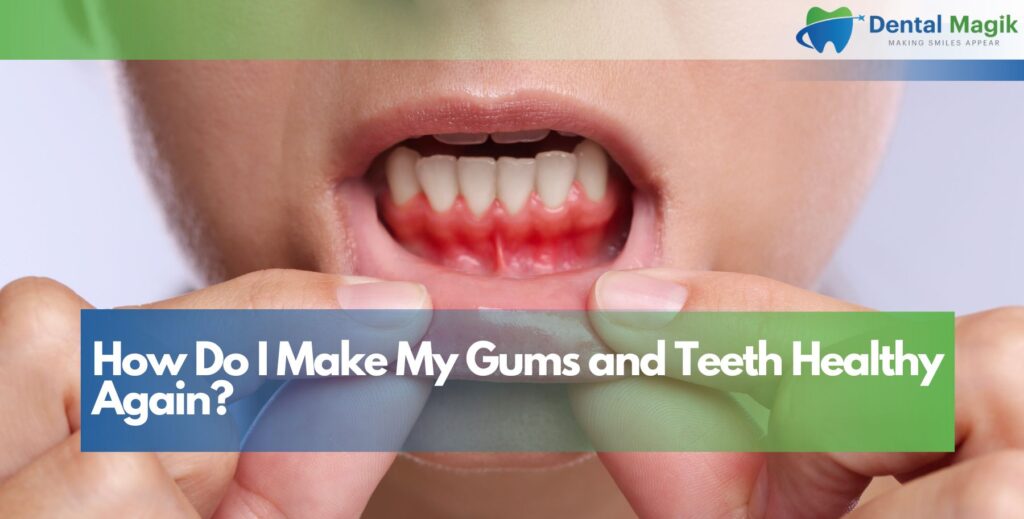A beautiful, confident smile can transform your entire appearance and boost your self-esteem significantly. Dental veneers have become the gold standard for smile makeovers, offering patients in East Brunswick a quick and effective way to address multiple cosmetic dental concerns simultaneously. Whether you’re dealing with stained teeth, chipped teeth, gaps between teeth, or uneven teeth, porcelain veneers can provide the dramatic transformation you’ve been dreaming of.
Cosmetic dentistry has evolved tremendously over the past decade, with dental veneers leading the charge in providing natural-looking, long-lasting results. These ultra-thin shells of porcelain or composite resin are custom-designed to fit over your existing teeth, creating an instantly improved smile that looks and feels completely natural.
Understanding Dental Veneers and Their Benefits
Dental veneers are wafer-thin, custom-made shells designed to cover the front surface of your teeth. These cosmetic dental solutions are crafted from high-quality porcelain or composite materials that mimic the natural translucency and appearance of tooth enamel. Veneers are permanently bonded to your teeth, creating a new surface that’s both beautiful and functional.
The primary advantage of dental veneers lies in their versatility. Unlike other cosmetic dental treatments that address single issues, veneers can simultaneously correct multiple aesthetic problems including tooth discoloration, minor misalignment, worn enamel, uneven tooth length, and small gaps. This comprehensive approach makes them an excellent choice for patients seeking dramatic smile improvements.
Porcelain veneers offer superior durability and stain resistance compared to natural teeth. With proper care, they can last 10-15 years while maintaining their original beauty and luster. The biocompatible materials used in modern veneers are well-tolerated by gum tissue, reducing the risk of allergic reactions or tissue irritation.
Common Smile Issues That Veneers Address
Dental veneers in East Brunswick are remarkably versatile cosmetic dental solutions that can address multiple aesthetic concerns simultaneously. From stubborn stains and chipped teeth to gaps and minor misalignment, veneers provide comprehensive smile enhancement. Understanding which issues veneers can correct helps you determine if this transformative treatment is the right choice for achieving your ideal smile.
Tooth Discoloration and Staining
Tooth discoloration is one of the most common reasons patients seek veneer treatment. Deep stains caused by coffee, wine, tobacco, or certain medications often resist traditional teeth whitening methods. Porcelain veneers completely mask these stains, providing a permanently white and bright smile that won’t yellow over time.
Intrinsic stains, which develop inside the tooth structure due to trauma, fluorosis, or certain medications, are particularly challenging to treat with conventional whitening. Veneers offer the perfect solution by creating a new, pristine surface that conceals any underlying discoloration while providing natural-looking results.
Chipped, Cracked, or Worn Teeth
Chipped teeth and cracked teeth can significantly impact your smile’s appearance and your confidence in social situations. Dental veneers restore the natural shape and size of damaged teeth while providing additional protection against future damage. The durable porcelain material is actually stronger than natural tooth enamel, offering enhanced protection for weakened teeth.
Worn teeth from teeth grinding (bruxism) or natural aging can be completely restored with veneers. These restorations rebuild the lost tooth structure while creating a more youthful appearance. For patients with grinding habits, special considerations are made during treatment planning to ensure optimal results.
Gaps and Minor Misalignment Issues
Gaps between teeth (diastemas) can be effectively closed using dental veneers without the need for orthodontic treatment. This approach is particularly beneficial for adult patients who want quick results without the time commitment of traditional braces. Veneers can create the illusion of perfectly aligned teeth while maintaining natural proportions.
Minor tooth misalignment issues that don’t require comprehensive orthodontic treatment can often be corrected with veneers. By carefully adjusting the size and shape of each veneer, your dentist can create the appearance of straight, properly aligned teeth in just a few appointments.
The Veneer Treatment Process
The veneer treatment process is carefully orchestrated to ensure optimal results and patient comfort throughout your smile transformation. From initial consultation to final placement, each step is designed to create beautiful, long-lasting results. Understanding the treatment timeline helps patients prepare mentally and practically for their veneer journey and sets realistic expectations for achieving their dream smile.
Initial Consultation and Treatment Planning
Your veneer journey begins with a comprehensive consultation where your dentist evaluates your oral health, discusses your aesthetic goals, and determines if you’re a good candidate for veneer treatment. Digital smile design technology allows you to preview your potential results before treatment begins, ensuring your expectations align with achievable outcomes.
Treatment planning involves careful analysis of your facial features, lip line, tooth proportions, and gum contours. This detailed assessment ensures that your new veneers will complement your natural features and create a harmonious, attractive smile. Photographs and impressions are taken to guide the laboratory in creating your custom veneers.
Shade selection is a critical aspect of the planning process. Your dentist will help you choose the most appropriate color for your veneers, considering factors like your skin tone, eye color, and personal preferences. The goal is to create a natural-looking result that enhances your overall appearance without looking artificial.
Tooth Preparation and Temporary Veneers
Tooth preparation for veneers typically requires removing a small amount of enamel from the front surface of your teeth – usually about 0.5mm, which is roughly the thickness of a fingernail. This minimal preparation ensures proper fit and prevents your veneers from looking bulky or unnatural. Local anesthesia is used to ensure your comfort throughout the procedure.
Temporary veneers are often placed to protect your prepared teeth and maintain your appearance while your permanent veneers are being crafted in the laboratory. These temporaries give you a preview of your new smile and allow for any final adjustments to be communicated to the lab technician.
Impressions or digital scans of your prepared teeth are sent to a specialized dental laboratory where skilled technicians create your custom veneers. This process typically takes 2-3 weeks, during which your temporary veneers protect your teeth and maintain your smile’s appearance.
Final Veneer Placement
Veneer placement is an exciting appointment where your new smile is revealed. Before permanent bonding, your dentist will try in each veneer to check fit, shape, and color. Minor adjustments can be made at this stage to ensure perfect results. Once you’re completely satisfied with the appearance, the veneers are permanently bonded to your teeth.
The bonding process involves cleaning and etching the tooth surface, applying a special adhesive, and carefully positioning each veneer. Light-curing technology hardens the bonding material, creating a strong, permanent attachment. Final adjustments to your bite ensure comfortable chewing and speaking.
Immediate results are one of the most satisfying aspects of veneer treatment. You’ll leave the office with a dramatically improved smile that looks completely natural. Most patients are amazed by the transformation and experience an immediate boost in confidence.
Types of Dental Veneers Available
Choosing the right type of veneer is crucial for achieving your desired results within your budget and timeline. Porcelain veneers and composite veneers each offer unique advantages and considerations. Understanding the differences between these options helps you make an informed decision about which veneer material best suits your needs, lifestyle, and aesthetic goals for optimal satisfaction.
Porcelain Veneers
Porcelain veneers represent the gold standard in cosmetic dentistry. These custom-made restorations offer superior aesthetics, durability, and stain resistance. High-quality porcelain closely mimics the natural translucency of tooth enamel, creating incredibly lifelike results that are virtually indistinguishable from natural teeth.
The manufacturing process for porcelain veneers involves skilled laboratory technicians who hand-craft each restoration to match your specific requirements. Advanced ceramics used in modern veneers are incredibly strong and can withstand normal chewing forces while maintaining their beautiful appearance for many years.
Porcelain veneers are highly biocompatible and rarely cause allergic reactions or gum irritation. The smooth surface of porcelain also resists bacterial accumulation, making them easier to keep clean than natural teeth with irregular surfaces or existing restorations.
Composite Veneers
Composite veneers offer a more affordable alternative to porcelain while still providing significant smile improvement. These veneers are made from tooth-colored resin that can be applied directly to your teeth in a single appointment or crafted in a laboratory for more complex cases.
Direct composite veneers are sculpted on your teeth during your appointment, allowing for immediate results and easier repairs if needed. While they may not last as long as porcelain veneers, they offer excellent value and can be an ideal choice for younger patients or those seeking a more conservative approach.
Indirect composite veneers are fabricated in a laboratory, offering better durability and aesthetics than direct applications. These restorations provide an excellent middle ground between direct composite and porcelain veneers in terms of both cost and longevity.
Caring for Your New Veneers
Proper veneer care is essential for maintaining their beauty and ensuring maximum longevity from your investment. While veneers are durable and stain-resistant, they require consistent oral hygiene and protective measures. Following your dentist’s care instructions and avoiding harmful habits will help your veneers provide years of confident smiles and optimal function.
Daily Oral Hygiene Routine
Proper oral hygiene is essential for maintaining your veneers and ensuring their longevity. Regular brushing with a non-abrasive toothpaste and soft-bristled toothbrush prevents plaque accumulation and maintains the polish of your veneers. Daily flossing is crucial for preventing gum disease and maintaining healthy tissues around your veneers.
Special care should be taken at the gum line where the veneer meets your natural tooth. This area is particularly susceptible to plaque accumulation and requires thorough cleaning to prevent dental decay or gum inflammation. Antibacterial mouthwash can provide additional protection against harmful bacteria.
Professional dental cleanings every six months are essential for maintaining your veneers and overall oral health. Your dental hygienist will use special instruments designed for cleaning veneers without scratching or damaging the surface. These regular appointments also allow for early detection of any potential issues.
Protecting Your Investment
Protecting your veneers from damage ensures they’ll provide years of beautiful service. Avoid using your teeth as tools to open packages, cut tape, or crack nuts. Hard foods like ice, hard candies, and popcorn kernels should be consumed carefully to prevent chipping or cracking.
If you grind your teeth at night, a custom night guard is essential for protecting your veneers from excessive forces. Teeth grinding can cause premature wear or fractures in veneers, making protection crucial for long-term success. Your dentist can create a comfortable, effective night guard specifically designed for patients with veneers.
Avoiding staining substances helps maintain the beauty of your veneers, though porcelain veneers are highly stain-resistant. Coffee, red wine, and tobacco can stain the bonding material around veneer edges, so moderation and good oral hygiene are important.
Expected Results and Timeline
Veneer treatment typically requires 2-3 appointments over 3-4 weeks. The first appointment involves consultation and treatment planning, the second includes tooth preparation and temporary placement, and the third completes the process with final veneer placement. Some cases may require additional appointments for complex smile designs or multiple veneers.
Immediate results are one of the most rewarding aspects of veneer treatment. You’ll see a dramatic improvement in your smile’s appearance as soon as your veneers are placed. Color, shape, size, and alignment issues are all addressed simultaneously, creating a comprehensive smile transformation.
Long-term results depend on proper care and maintenance. Porcelain veneers can last 10-15 years or longer with good oral hygiene and regular dental care. Composite veneers typically last 5-7 years before requiring replacement or touch-ups. Regular dental visits ensure early detection of any issues and help maintain optimal results.
Cost Considerations and Value
Veneer costs vary based on several factors including the number of veneers needed, the type of material chosen, and the complexity of your case. While veneers represent a significant investment, many patients find the improved confidence and enhanced appearance provide excellent value for their investment.
Financing options are available to make veneer treatment more accessible. Many dental practices offer payment plans or work with healthcare financing companies to help patients achieve their dream smiles. Dental insurance typically doesn’t cover cosmetic procedures, but some plans may provide partial coverage if veneers address functional issues.
The long-term value of veneers should be considered when evaluating costs. Unlike other cosmetic treatments that require regular touch-ups or replacements, veneers provide years of consistent results with minimal maintenance beyond regular oral hygiene and dental visits.
Choosing the Right Dentist for Your Veneers
Selecting an experienced cosmetic dentist is crucial for achieving optimal results with your veneer treatment. Look for a dentist with extensive training in cosmetic dentistry, a portfolio of successful veneer cases, and positive patient reviews. Before and after photos can help you evaluate the quality of their work.
Advanced technology like digital smile design, 3D imaging, and computer-aided design can significantly improve the precision and predictability of your results. Dentists who invest in these technologies often provide superior outcomes and more comfortable treatment experiences.
Communication is essential throughout the veneer process. Your dentist should listen to your concerns, explain all aspects of treatment clearly, and work with you to achieve your desired results. A good dentist will also discuss realistic expectations and alternative treatments if veneers aren’t the best option for your situation.
Conclusion
Dental veneers offer an exceptional opportunity to transform your smile and boost your confidence. Whether you’re dealing with discolored teeth, chipped teeth, gaps, or minor alignment issues, veneers can provide the dramatic improvement you’ve been seeking. The combination of advanced materials, precise craftsmanship, and artistic skill makes modern veneer treatment more predictable and beautiful than ever before.
The investment in veneer treatment extends far beyond the financial cost – it’s an investment in your confidence, professional success, and overall quality of life. With proper care and maintenance, your veneers will provide years of beautiful, natural-looking results that enhance your appearance and boost your self-esteem.
For East Brunswick residents considering veneer treatment, choosing an experienced Dentist in East Brunswick, NJ ensures access to the latest techniques, high-quality materials, and personalized care throughout your smile transformation journey.
Frequently Asked Questions (FAQs)
How long do dental veneers last?
Porcelain veneers typically last 10-15 years with proper care, while composite veneers generally last 5-7 years. Longevity depends on factors like oral hygiene, diet, grinding habits, and regular dental care. Many patients enjoy their veneers for even longer periods with excellent maintenance.
Are dental veneers painful to get?
Veneer placement involves minimal discomfort. Local anesthesia is used during tooth preparation to ensure comfort. Most patients experience little to no pain after the procedure, and any sensitivity typically resolves within a few days. Temporary veneers protect your teeth between appointments.
Can I eat normally with veneers?
Yes, veneers allow you to eat most foods normally. However, avoid extremely hard foods like ice or hard candies that could cause chipping. Sticky foods should also be consumed carefully. With proper care, you can enjoy your favorite foods while protecting your investment.
Do veneers require special maintenance?
Veneer care is similar to caring for natural teeth. Regular brushing, flossing, and professional cleanings are essential. Use non-abrasive toothpaste and avoid using your teeth as tools. If you grind your teeth, a night guard is recommended to protect your veneers.
Can veneers be whitened if they become stained?
Porcelain veneers are highly stain-resistant and don’t respond to traditional whitening treatments. If staining occurs, professional cleaning can often restore their appearance. Composite veneers may show some staining over time and might require replacement or refinishing to restore their original color.
How many veneers do I need for a smile makeover?
The number of veneers needed varies based on your smile goals and the extent of issues being addressed. Many patients get 6-8 veneers on their upper front teeth for a smile makeover, while others may need only 2-4 veneers to address specific concerns. Your dentist will recommend the optimal number during consultation.
Are there alternatives to veneers?
Alternatives include teeth whitening, dental bonding, crowns, or orthodontic treatment, depending on your specific needs. Veneers are often chosen when multiple issues need addressing simultaneously. Your cosmetic dentist will discuss all options to help you make the best choice for your situation.
Can veneers fix crooked teeth?
Veneers can address minor alignment issues and create the appearance of straighter teeth. For significant orthodontic problems, traditional braces or clear aligners might be more appropriate. Veneers work best for small gaps, slightly rotated teeth, or minor crowding issues that don’t require comprehensive orthodontic treatment.







